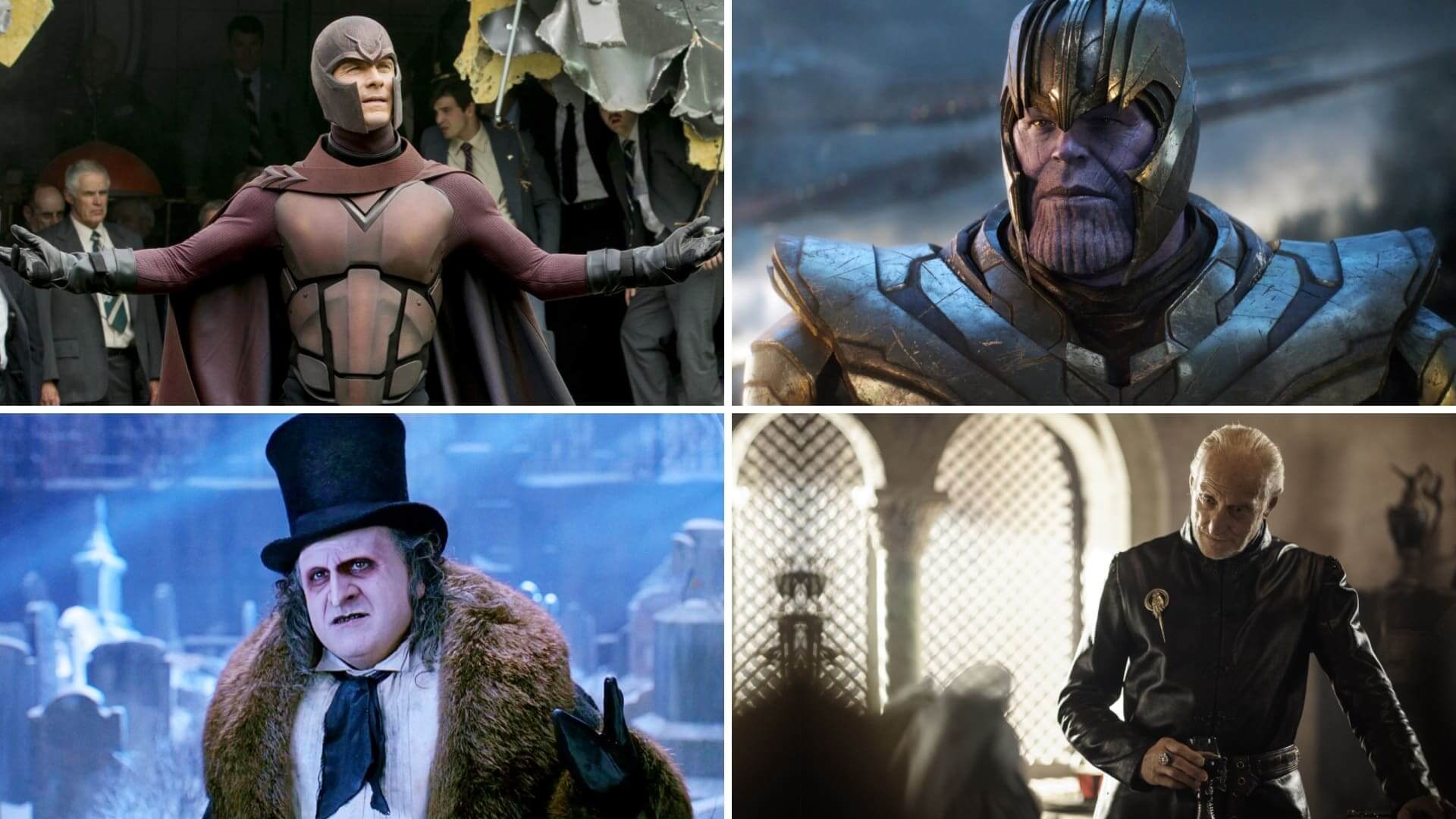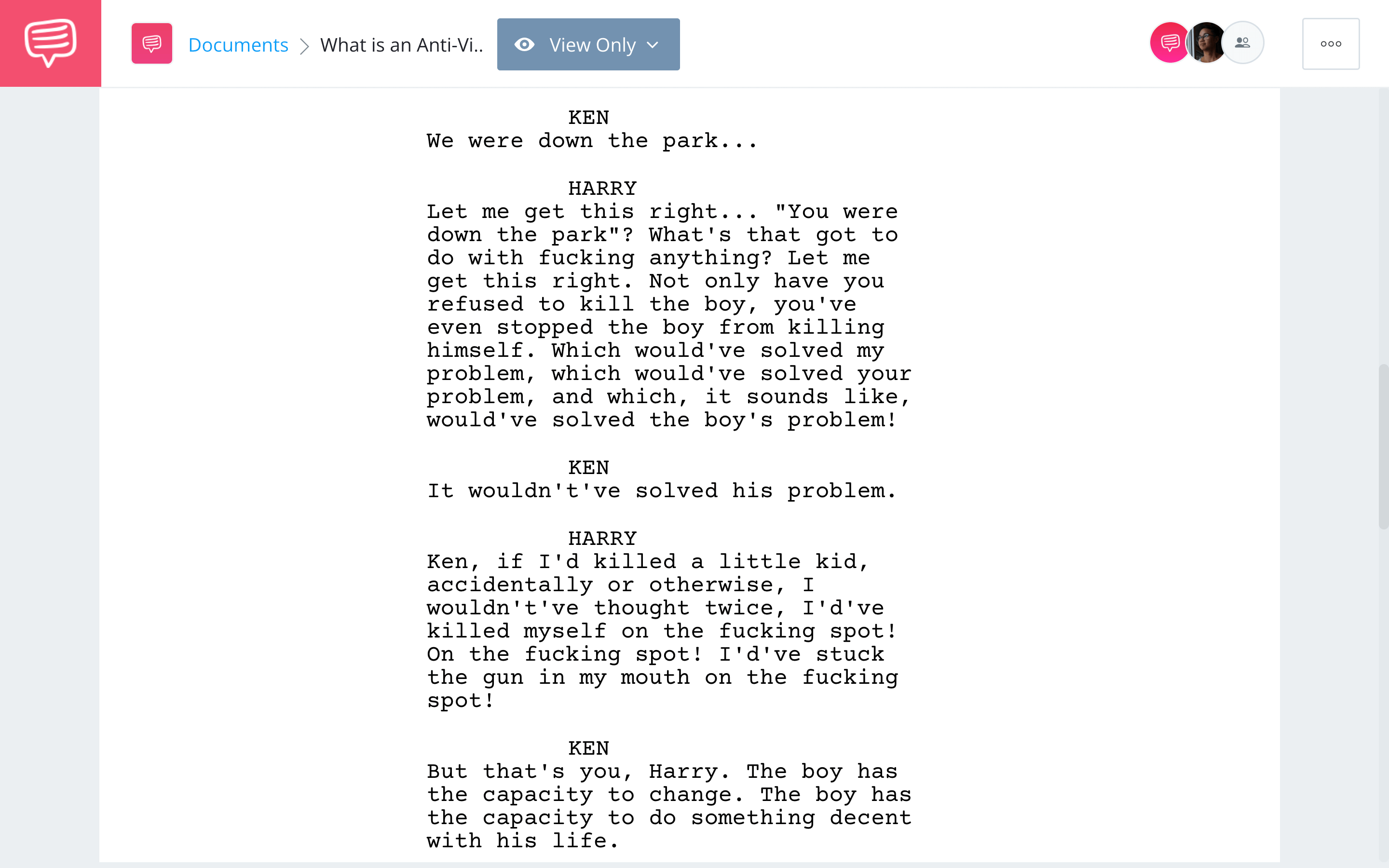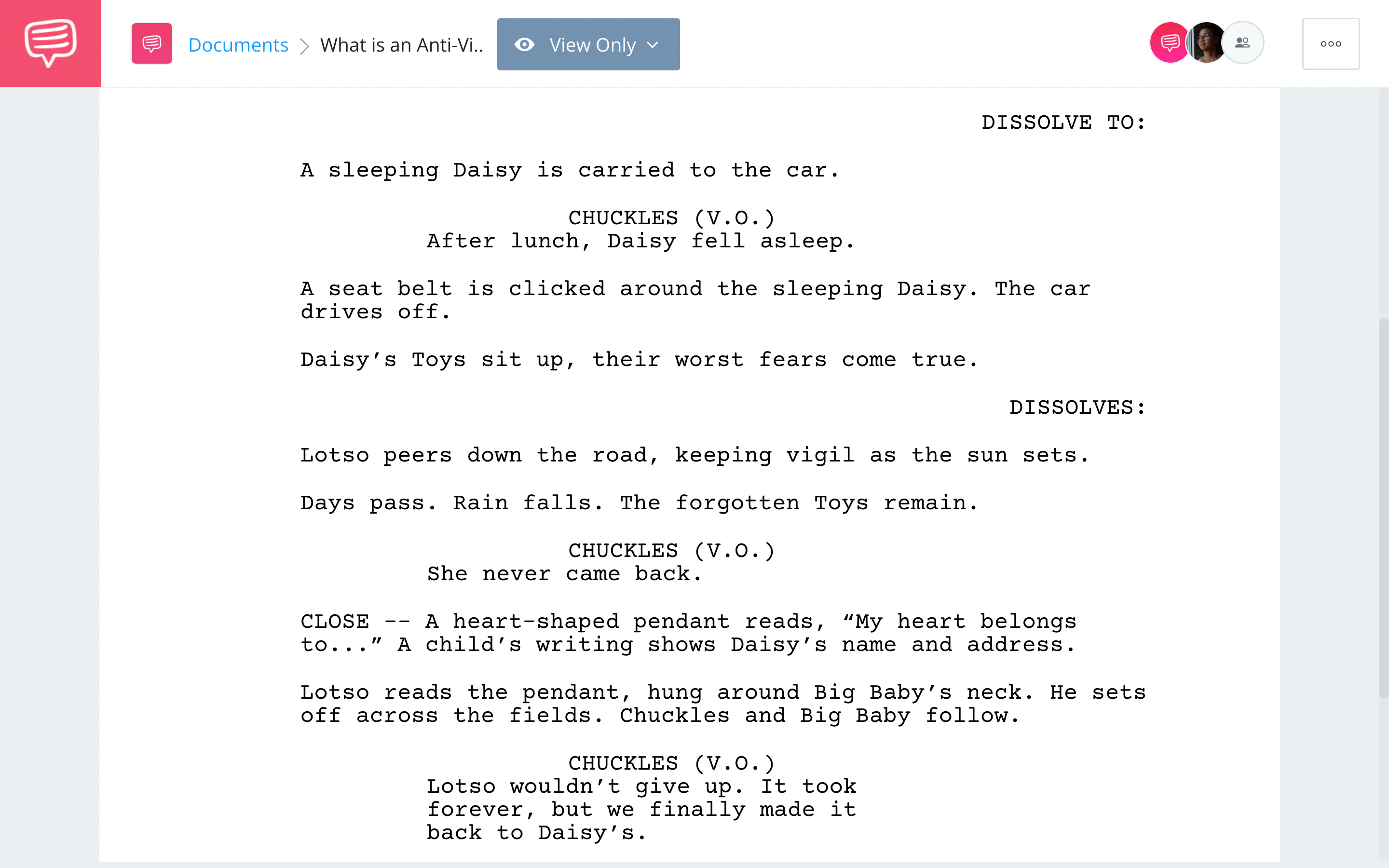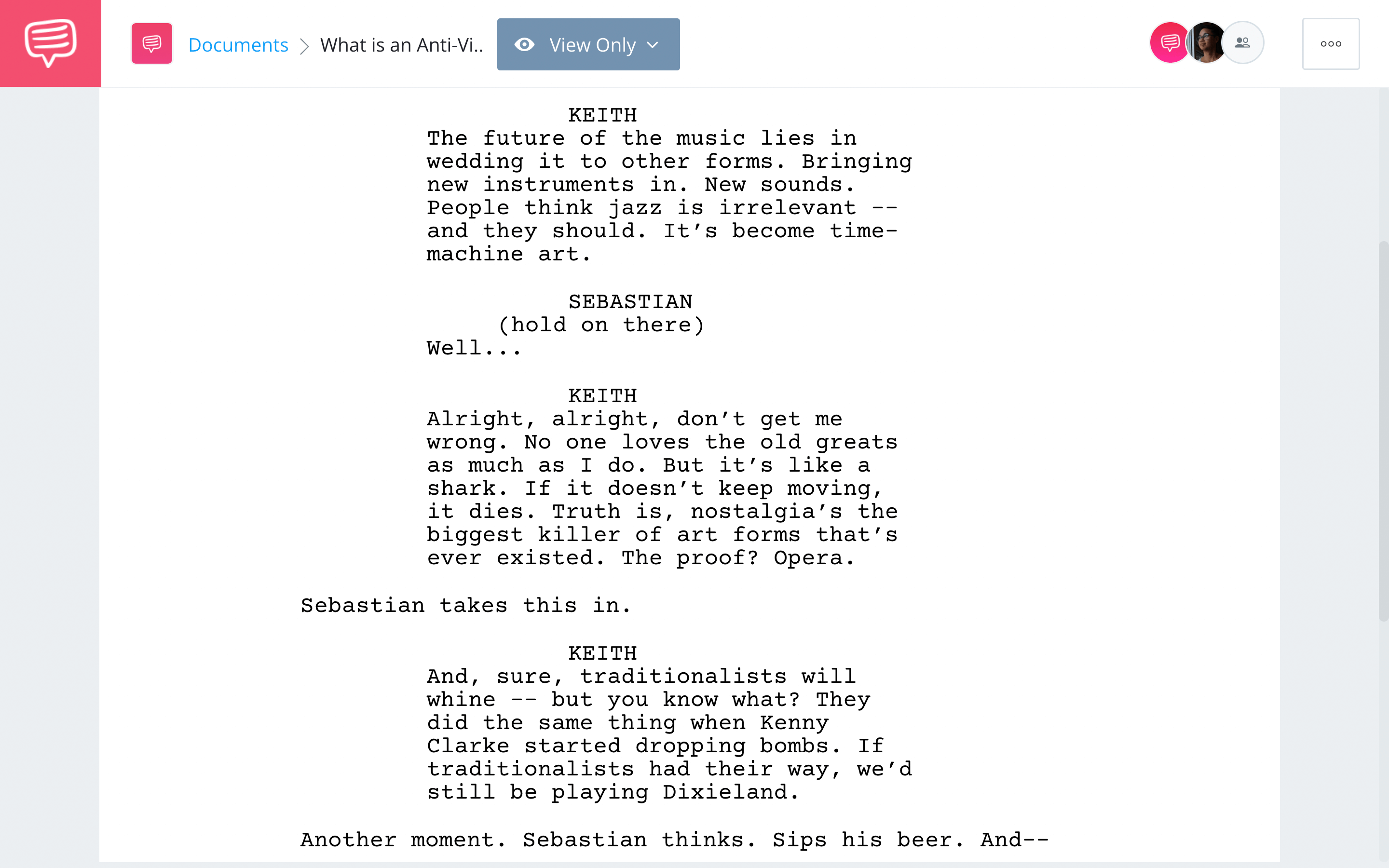You’ve likely heard of an anti-hero – a protagonist who lacks common heroic attributes like morality and courage. But what is an anti-villain? Wouldn’t that just be a hero? The real answer is a bit more complicated, so let’s take a look at when your villain actually kind of has a good point to make.
Define Anti-Villain
How do we define anti-villain?
Villains are the bad guys. They want to take over the world or simply just get in the way of the hero. But sometimes, you have a villain whose goals are a little more complex than just “kill everyone in sight.”
ANTI-VILLAIN DEFINITION
What is an anti-villain?
An anti-villain is a character who has heroic personality traits or goals but is ultimately the bad guy in this story. For example, an anti-villain may have noble goals, but their means to attain that goal are evil. This character may even make selfish decisions, but they are a good person who would team up with the hero under the right circumstances. Similarly to how making the hero an anti-hero is often an attempt to complicate the character and give them gray morals, making a character an anti-villain often makes the audience question who’s actually right.
What are some anti-villain examples?
- The Borg from Star Trek
- Tywin Lannister from Game of Thrones
- Thanos from the Marvel Cinematic Universe
- Ty Lee from Avatar: The Last Airbender
- Captain Hector Barbossa from Pirates of the Caribbean
Some villains are just plain bad. But an anti-villain could theoretically be the hero (or anti-hero) in the story if it was just told from a different perspective. This type of villain could genuinely believe their the hero of their story because what they’re trying to attain is good. This quick primer from Wilson - The Storyteller does a good job summing it up.
The Rise of the Anti-Villains • Wilson - The Storyteller
But there’s more than one way to make a villain seem… good. Anti-villains can essentially be broken down into four categories. So when writing your next script, see if you can make your villain a bit more complex by coloring between the lines with one of these archetypes.
Anti-Villain Examples
Type 1: The Noble Anti-Villain
Villains are generally associated with selfishness. They act in their own self-interest and would stab you in the back without a second thought. But there are also villains who, much like Batman, are guided by a moral code.
These are noble anti-villains. In Reservoir Dogs, Mr. White is disgusted at the brutality displayed by Mr. Blonde. Captain Freedom in The Running Man abides by the Gladiator Code. And while Harry in In Bruges is a violent crime boss, he has a strong code he believes in.
Harry believes strongly that anyone who kills a child should be punished. When Ray accidentally kills a young boy, Harry asks his partner, Ken, to take him out. Harry eventually takes matters into his own hands, and at one point, states that if he had killed a kid, accidentally or not, he would’ve immediately killed himself. That’s how strongly he believes in the code.
We brought the In Bruges screenplay into StudioBinder's screenwriting software so we could take a specific look at this scene. Click the image below to read the entire scene and how an anti-villain gets written on the page.
Harry and Ken • In Bruges • Read Full Scene
Harry finally tracks Ray down and kills him. But one of the bullets hits a little person dressed as a schoolboy. Harry, believing he’s killed a child, doesn’t hesitate to put the gun in his mouth and pull the trigger. Graphic content!
Stick to Your Principles • In Bruges
Harry is the antagonist, but he doesn’t kill indiscriminately. He has a moral code, and when he himself breaks the code, he pays the consequences. He may be a tad psychotic, but there’s a nobility to his madness.
He has rules he doesn’t break.
This makes him far more interesting than a psychopath who kills everyone in his path. When writing your next screenplay, it can be helpful to give both your hero and villain a set of morals neither one deviates from. Or if they do deviate, how do they respond?
Anti-Villain Definition and Examples
Type 2: The Well-Intentioned Extremist
The next variation, which we’ll refer to as “the well-intentioned extremist,” actually has good goals. This villain ultimately wants to bring good to the world, but their methods for achieving that goal are ill-advised.
This is a popular trope in superhero movies of late. Thanos in Avengers: Infinity War and Endgame wants to bring peace and balance to the universe by wiping out half of all life. Killmonger in Black Panther wants revenge on the people who oppressed and enslaved his ancestors. He has every right to feel that anger, but his goal is to kill millions.
But one comic book villain who perhaps has the most anger toward the world is Magneto from the X-Men films.
Magneto’s backstory was best showcased in X-Men: First Class where we see him growing up as a Jewish boy in the middle of the Holocaust. We see him being oppressed for belonging to a minority group he was born into.
Later, as a powerful mutant, we again see him oppressed for belonging to a minority group he was born into. When we get to the climactic battle in Cuba, we get this callback to Magneto’s past.
Never Again • X-Men: First Class
We, as the audience, know what “just following orders” alludes to. We understand anyone who saw their family perish in concentration camps would want revenge on the people responsible. Even as an adult, Magneto continues to be persecuted, and he’s had enough.
While he’s fine with killing people, we understand the anger. We shouldn’t agree with the methodology, but we know where he’s coming from. With different tactics, the well-intentioned extremist could very well be a hero. But their anger blinds them to a better path.
In your script, remember that you don’t need world-ending consequences to have a well-intentioned extremist. You just need someone who’s been pushed too far. They still want a better world. They just can’t see the light any longer.
Related Posts
Anti-Villain Meaning
Type 3: The Pitiable Anti-Villain
Some villains could have had a better lot in life. However, due to a tragic backstory, they turned to a life of evil. The backstory makes you feel sorry for them. While they may still commit heinous acts, you understand how they ended up where they are.
Examples include Oswald Cobblepot a.k.a. Penguin in Batman Returns. He was born disfigured, so his parents abandoned him when he was young. Andrew from Chronicle is constantly bullied at school and has an abusive father at home. But not every backstory has to be so heavy.
Let’s look at Lotso from Toy Story 3.
He’s essentially running a toy prison in Sunnyside, and eventually, we learn his tragic backstory. Namely, he was abandoned by his kid and then replaced with another Lotso teddy bear. Read the scene below as a great example of how to anti-villains are created with effective an effective backstory.
Lotso’s Past • Toy Story 3 • Read Full Scene
How many of us have forgotten or misplaced a toy? We empathize with Lotso because if our toys really could feel, they would be utterly betrayed if we left them somewhere.
Lotso’s Past • Toy Story 3
It’s an incredibly sad sequence, and it makes us understand how Lotso turned out the way he did. Granted, it doesn’t justify his actions, but we feel like we know Lotso a little bit better by getting his backstory.
If Lotso had just been loved or was able to return to his kid, then maybe he wouldn’t be a dictator at Sunnyside. That’s the goal of the pitiable anti-villain. We know that if things had just been a little bit different, this person could’ve been good. They could’ve been a hero. And that’s the biggest tragedy of all.
So when writing a pitiable anti-villain, think of a backstory that will grip the audience. Viewers should be able to clearly see the path between the tragic circumstances and the villainy they are witnessing presently.
What Does Anti-Villain Mean?
Type 4: The Villain in Name Only
The protagonist needs someone (or something) to go up against. In many instances, the antagonist is not inherently evil. They may just have different belief systems than the hero, which puts them at odds. For the villain in name only to work, it should be possible to tell the story from their perspective with their goals and means seeming pretty reasonable.
For example, Javert in Les Misérables qualifies because Jean Valjean does break his parole. Javert is a little too dedicated to his craft for how passionately he hunts Jean Valjean down, but he is technically in the right, and in another story, we’d probably root for him.
Another antagonist who isn’t really evil would be Keith from La La Land. He’s actually a really nice guy who even gives Sebastian work. But there’s one issue that puts him at odds with the protagonist. Keith wants to move jazz forward while Sebastian wants to keep it in its roots.
Jazz Show • La La Land • Read Full Scene
Keith isn’t a bad guy, and he’s a good example of how an antagonist isn’t always necessarily “villainous.” He just has a different philosophy than the protagonist, and if we followed the story from his perspective, he’d probably see Sebastian as the antagonist because he’s unwilling to move jazz forward.
Start a Fire • La La Land
The villain in name only is a good reminder that antagonists don’t always need to be evil or sinister. Sebastian has a dream, and Keith wanted him to pursue a different kind of music.
Keep the character of Keith in mind if you ever find yourself with a villain in name only. Your antagonist doesn’t have to be vindictive toward your hero. You can get a lot of mileage out of having someone who just presents an opposing idea and makes the hero question their own philosophy.
Characteristics Of an Anti-Villain
How to write an anti-villain
Ultimately, picking the right anti-villain comes down to what kind of story you want to tell. Some anti-villains are just misguided. Others are delusional while some are 100% correct in their philosophy but just got lost along the way.
Villains who are just evil for evil’s sake aren’t usually that interesting. They just twirl their mustaches and get in the way of the hero. But an anti-villain can make the hero question their own motivations, especially when their two goals are uniquely linked.
Take Killmonger from Black Panther. Throughout the movie, T’Challa isn’t sure what he should do now that he’s the king of Wakanda. He’s introduced to various ideas from those closest to him, and Killmonger makes a valid argument. Killmonger wants to supply Wakandan technology to arm Black people from around the world to fight against their oppressors.
Killmonger’s Plan • Black Panther
Of course, Killmonger fails in his goals, but T’Challa actually takes his worldview into consideration. T’Challa learns that Wakanda can no longer abide by isolationist policies and must reveal itself to the world. However, instead of supplying weapons to Black communities, T’Challa will set up outreach centers to give people the resources they need to better thrive.
T’Challa and Shuri in Oakland • Black Panther
A simple villain just teaches the audience you shouldn’t be evil. But an anti-villain can make valid arguments to an audience. In ideal plots, combining the anti-villain and hero’s ideologies will give the audience the best idea of what values they should take with them once they leave the theater.
Related Posts
Up Next
Best Movie Villains of All Time
What makes anti-villains so great is that they feel so much more real. Their ideas and philosophies make them feel like actual people, not like stock characters. See how realistic movie villains can get by reviewing the best realistic movie villains ever. They’re so real they may make your skin crawl.



